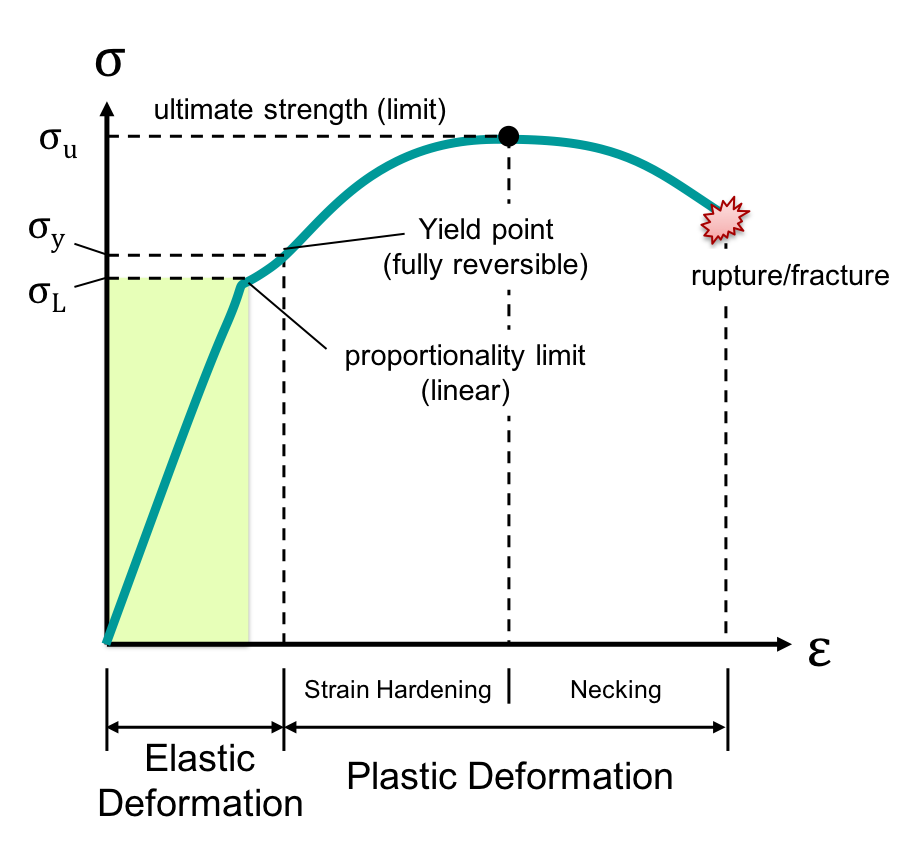1.1.6 Main Takeaways on Stress and Strain
Course subject(s)
Module 1. Introduction to Aerospace Structures and Materials
Well done! You have come to the end of this section. Let us briefly look back at the main points of the concepts of stress and strain:

For any structure or material, a stress-strain curve can be generated. Stress-strain curves are important, as they show the response of a material under loading, irrespective of the geometry of the structure.
On the vertical axis, we can read off the stress levels:
- The point at which the material no longer behaves linearly, according to the formula 𝜎=𝐸⋅𝜖 is indicated by 𝜎𝐿
- 𝜎𝑌 indicates the yield stress, which is the stress after which only plastic (irreversible) deformation takes place
- At 𝜎𝑈, the ultimate stress is reached which indicates the maximum stress a structure can withstand
- The point where the curve ends is the point of fracture or rupture
If we look at the horizontal axis, we can read of the type of deformation. The strain at which the yield stress is reached is where elastic (reversible) deformation ends and plastic (irreversible) deformation starts. After ultimate stress is reached, plastic deformation continues and necking (reduction of the cross-section of the geometry) occurs. The less strain that can occur before fracture, the more brittle the material is. Materials with a lot of strain before fracturing are classed as ductile.
The linear slope of the stress-strain diagram is indicative of the stiffness of the material. The steeper the slope, the higher the modulus of elasticity will be, and the stiffer the material, and vice versa.

Introduction to Aerospace Structures and Materials by TU Delft OpenCourseWare is licensed under a Creative Commons Attribution-NonCommercial-ShareAlike 4.0 International License.
Based on a work at https://online-learning.tudelft.nl/courses/introduction-to-aerospace-structures-and-materials/.



